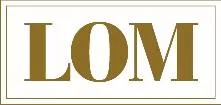- With the earnings season soon to be behind us, investors will begin to focus more clearly on the economic picture, which is, unfortunately, none too rosy. The multi-week equity rally is facing some headwinds, but it is notable that some of the recent leadership came from growth stocks - - suggesting that forward-looking folk were seeing the germination of a more sustainable upward trend in both the stock market and the economy.
- The key variable for the economy is business capital spending, which is still showing signs of softness. Uncertainty about sales growth, difficult capital markets and dodgy corporate balance sheets are keeping firms from acting more decisively. Nevertheless, there is a bit of evidence on a pickup in spending in a few areas. However, this is not likely to be generalised until confidence in sales growth and profitability returns. Right now, the conditions are not yet in place for "animal spirits" to revive.
- Recent disappointing economic numbers and an article in the Washington Post, which some interpret as a calculated news feed from the authorities, have renewed hopes for a Fed cut at the November 6 FOMC meeting. Expectations of Fed action have been swinging all over the place in recent months - - as indicated by changes in the fed-funds futures contract. In truth, at this juncture, it is a difficult to surmise how the Fed may act - - principally because policymakers are not sure where the economy is tending and their reading of where the economy is heading may be driven by immediate events and developments. The balance of forces within the FOMC may have swung towards easing, but it is difficult to be sure. There appears to be growing impatience with the slow pace of activity and they may be willing to use a good chunk of the ammunition they have left to soup it up.
- If the leak is correct and they are going to act, then a marginal 25 basis point cut isn’t going to have much of an affect on the economy and they are likely to go for a full 50 bps reduction. Because this move is not in response to a crisis situation or event, they will have to dispel fears about hidden systemic problems.
- Monetary policy is not a panacea for all ills. The earlier pre-emptive cuts will work their effect - - with a lag, of course. But the imbalances in the corporate sector will take time to be resolved, and currently there is little evidence of a capital crunch. Low rates, by themselves, will not make the world less uncertain.
Europe
- The decline in the headline German Ifo index, measuring business confidence, has negative implications not just for industrial production in Germany but for activity in the entire Eurozone. Unfortunately, the Ifo, as well as the equivalent French INSEE survey, have been on a downward trend since mid-year.
- Consumer confidence has also been falling in the two core economies and this does not bode well for spending decisions. The expected uptick in Eurozone inflation is related to earlier rises in energy prices and should be expunged from the system once the moderation in oil prices begins to feed through.
Asia/Pacific
- On the issue of the banks’ bad debt disposal, there is continued squabbling among various interested parties. Liberal Democratic Party stalwarts are fighting to block, FSA (Financial Services Agency) chief, Takenaka’s strategy. Meanwhile, the banks are struggling to preserve their interests and the Bank of Japan is weighing its options on the trade-off between further monetary easing, in return for effective reform plans.
Bonds
- Bond investors are again taking note of the weak economic numbers and Treasury yields have retraced a good part of their recent rise. Hopes of a Fed rate cut have also figured in the bond rally. The two-year note readily recovered from the new Treasury supply, resulting in a further curve-steepening move in the 2 to 10 year range.
- A weakening of the political risk premium built into oil prices has also helped the bond market rally. War drums in the Middle East have been quieter of late, though this is likely to be a temporary respite. But, it also appears that OPEC production is running well above quota levels, reducing any fears of supply shortages.
Currencies
- The commodity currencies, which are normally positively correlated with prospects for strengthening global growth, have been rising of late. However, the near-term outlook for a pickup in activity is cloudy and it may be too early for an upward trend in these currencies to be sustainable.
The content of this article does not constitute legal advice and should not be relied on in that way. Specific advice should be sought about your specific circumstances.
